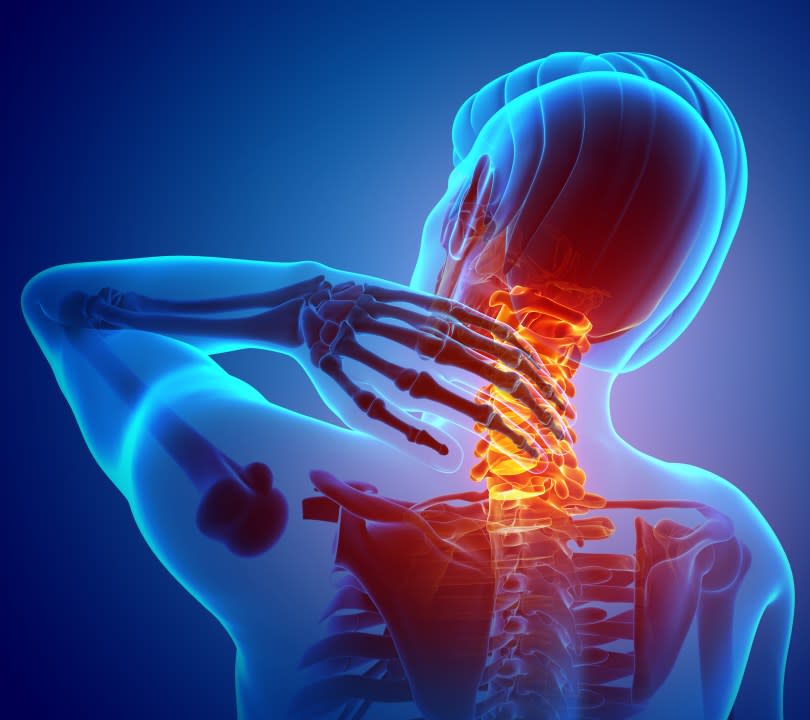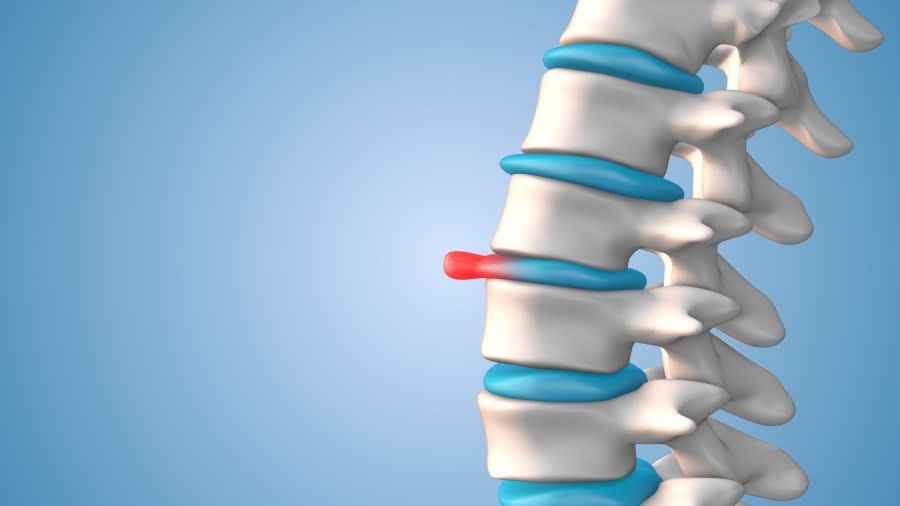Understanding and managing neck pain

TAMPA (BLOOM) – We’ve all been there—waking up with a stiff neck that makes turning your head a challenge or feeling that nagging pain after a long day at the computer. Neck pain is incredibly common and can be a real pain in the neck, quite literally. Whether it’s a dull ache or a sharp, stabbing sensation, neck pain can disrupt your daily life. Let’s look into what causes neck pain, how to treat it, and most importantly, how to prevent it.

Understanding Neck Pain
Causes of Neck Pain
Neck pain can stem from a variety of sources. Muscle strain is a biggie, often caused by poor posture, overuse, or sudden movements. We’ve all hunched over our phones or laptops for too long, right? Injuries like whiplash from a car accident or a sports mishap can also leave your neck hurting. Then there are degenerative diseases like arthritis, cervical spondylosis, and herniated discs that can wreak havoc. And let’s not forget stress, poor sleeping habits, and those less-than-ideal ergonomic setups at work.
Symptoms of Neck Pain
Common symptoms include stiffness, limited range of motion, and pain that can be either sharp or dull. You might also experience headaches, shoulder pain, or even numbness and tingling in your arms. If any of these sound familiar, you’re not alone.
Diagnosing Neck Pain
When you visit your doctor, they’ll start with a medical history and physical examination. Expect questions about your lifestyle, activities, and any previous injuries. They’ll also test your range of motion, check for tenderness, and assess your nerve function. Diagnostic tests like X-rays, MRIs, or CT scans might be ordered to get a clearer picture. Sometimes, blood tests are needed to rule out infections or inflammatory conditions.
Managing and Treating Neck Pain
Home Remedies and Self-Care
Start with some simple home remedies. Rest and modify your activities to avoid what makes the pain worse. Ice and heat therapy can work wonders—try cold packs to reduce inflammation and heating pads to relax your muscles. Over-the-counter medications like NSAIDs or pain relievers can also help manage the discomfort.
Professional Treatments
If home remedies aren’t cutting it, it might be time to seek professional help. Physical therapy can offer exercises, stretches, and posture training tailored to your needs. Chiropractic care involves spinal adjustments and manual therapy, which can provide relief. Your doctor might also prescribe stronger pain relievers, muscle relaxants, or anti-inflammatory drugs. In more severe cases, corticosteroid injections might be recommended to manage pain.
Alternative Therapies
Don’t overlook alternative therapies. Acupuncture has been shown to provide relief for some people. Massage therapy can help reduce tension and pain. Practices like yoga and Pilates not only strengthen and increase flexibility but also promote overall well-being.
Preventing Neck Pain
Ergonomic Adjustments
Prevention is key. Start with ergonomic adjustments at your workstation. Ensure your chair, desk, and monitor are set up correctly. Keep your screen at eye level and your back straight. Small changes can make a big difference.
Lifestyle Changes
Incorporate regular exercise into your routine to strengthen your neck and back muscles. Stress management techniques like meditation and mindfulness can also help reduce tension that contributes to neck pain.
Sleep Hygiene
Your sleep setup matters, too. Choose a pillow that supports your neck properly, and try to sleep in positions that reduce strain on your neck. A good night’s sleep can do wonders for your neck health.
When to See a Doctor
Sometimes, neck pain is more than just an annoyance. Severe pain that doesn’t improve, neurological symptoms like weakness, numbness, or tingling, and other concerning signs like fever or unexplained weight loss are all reasons to see a doctor. During your visit, your doctor will assess your condition and may refer you to a specialist if needed.
Herniated and Bulging Disc Injuries in the Neck

Neck pain can often be traced back to issues with the discs in your cervical spine. Two common culprits are herniated and bulging discs. While they might sound similar, they have distinct differences and can cause varying levels of discomfort.
Understanding Herniated and Bulging Discs
Herniated Disc: A herniated disc occurs when the soft, gel-like center of a disc (nucleus pulposus) pushes out through a tear in the tougher outer layer (annulus fibrosus). This can put pressure on nearby nerves, leading to pain, numbness, or weakness in the neck, shoulders, and arms. Herniated discs are often a result of wear and tear, sudden injuries, or heavy lifting.
Bulging Disc: A bulging disc, on the other hand, happens when the disc protrudes outward but remains intact. It’s more like a tire that’s starting to bulge but hasn’t burst. This condition can also cause pressure on the spinal nerves and lead to pain, but it’s usually less severe than a herniated disc. Bulging discs are typically caused by age-related degeneration.
Symptoms of Herniated and Bulging Discs
Both conditions can present similar symptoms, which might include:
Neck pain that can be sharp or dull
Pain radiating to the shoulders, arms, or hands
Numbness or tingling in the arms or hands
Muscle weakness in the shoulders, arms, or hands
Difficulty turning or moving the neck
Diagnosing Disc Issues
To diagnose herniated or bulging discs, doctors will conduct a physical examination and review your medical history. They may also order imaging tests like X-rays, MRI, or CT scans to get a detailed view of your spine and pinpoint the exact cause of your pain.
Treatment Options
Conservative Treatments: Most cases of herniated or bulging discs can be managed with conservative treatments. These might include:
Rest and Activity Modification: Avoid activities that exacerbate your symptoms.
Physical Therapy: Exercises and stretches to strengthen neck muscles and improve flexibility.
Medications: Over-the-counter pain relievers, NSAIDs, or muscle relaxants.
Ice and Heat Therapy: Using cold packs to reduce inflammation and heating pads to ease muscle tension.
Advanced Treatments: If conservative treatments don’t provide relief, more advanced options may be necessary:
Corticosteroid Injections: To reduce inflammation and relieve pain.
Chiropractic Care: Spinal adjustments to alleviate pressure on the nerves.
Surgery: In severe cases, surgical options like discectomy (removal of the herniated part of the disc) or spinal fusion might be considered.
Preventing Disc Problems
Preventing herniated and bulging discs involves maintaining a healthy lifestyle and proper body mechanics:
Exercise Regularly: Strengthen the muscles supporting your neck and spine.
Maintain Good Posture: Keep your spine aligned, especially when sitting or standing for long periods.
Lift Properly: Use your legs, not your back, to lift heavy objects.
Healthy Weight: Maintain a healthy weight to reduce strain on your spine.
Neck pain is a common issue, but with the right approach, it can be managed effectively. From understanding the causes and symptoms to exploring treatment options and prevention strategies, you have the tools to take control of your neck health. Remember, proactive steps can lead to significant improvements in your quality of life.
Taking these steps can help you move towards a pain-free life. So, take care of your neck—it supports your head, after all!
Copyright 2024 Nexstar Media, Inc. All rights reserved. This material may not be published, broadcast, rewritten, or redistributed.
For the latest news, weather, sports, and streaming video, head to WFLA.

